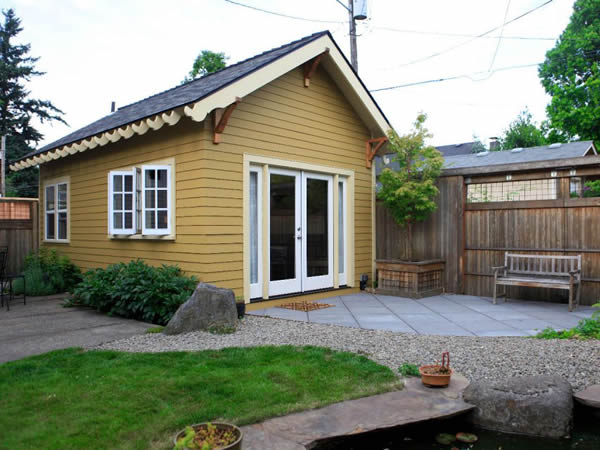The Arlington County Board voted 4-1 at its Tuesday meeting to loosen the rules around homeowners adding “accessory dwelling units” to their properties.
The revisions adopted by the Board would, among other things:
- Put no limit on the size of an ADU located wholly within a basement
- Require that an ADU take up no more than either 35 percent of the combined floor area of the property, or up to a maximum of 750 square feet
- Allow detached ADUs in existing accessory buildings (like a garage) and assess more options for setback requirements for new detached accessory dwellings
- Remove the annual limit on the number of ADUs that can be created in the county
- Require any requirement for the owner to occupy the property, but if the owner does not occupy one of the dwellings, the entire property may be occupied by no more than one family
Only about 20 ADUs — defined as a second place to live on a property, with a kitchen, a bathroom and a separate entrance — have been approved in Arlington since 2009.
A proposal to relax rules in the county’s Zoning Ordinance had been under discussion since earlier this year as the county looks to encourage more ADUs, also known as “granny flats” or “mother-in-law suites.”
“The ordinance we passed in 2008 failed to generate accessory dwellings,” County Board Chair Jay Fisette said in a statement. “We are committed to creating more affordable housing in our County, and to making it easier for Arlingtonians to age in place. An accessory dwelling could create an additional income stream for those on fixed incomes. These revisions will give homeowners more opportunities to create accessory dwellings, while maintaining the character of our single-family neighborhoods.”
Board member John Vihstadt voted against the plan, citing “anxiety” from residents worried about neighborhoods being taken over by ADUs, as well as the worries of some about the impact on trees, stormwater management and other environmental aspects.
During their deliberations, Board members wrestled with how to direct County Manager Mark Schwartz to study requirements for new detached buildings that could be built to house an ADU. Existing structures are allowed to house ADUs right away.
Vihstadt tried to widen the study beyond setback requirements — how far back the ADU should be from the edges of the property — to look at building height and other aspects, but that brought opposition from Fisette.
“It seems to me you’ve opened up a lot more conversation here that will become far more complicated in the days ahead,” Fisette said, urging his colleagues to keep things simple and just study setback requirements.
“Just because a policy is simple to understand doesn’t make it any more sound than if it’s more complicated,” Vihstadt responded. “These are important characteristics that are taken into account in Arlington and elsewhere.”
Board members voted to direct Schwartz to only study setback requirements, and he is expected to provide his findings to the Board in the coming months. Members agreed that needs more work before a final decision can be made.
“Certainly, I think the desire to make sure we are working with homeowners to allow existing buildings to be used for this purpose makes a lot of sense,” Board member Christian Dorsey said. “But moving forward with new buildings, I’m not sure we’ve considered all options available to us to account for the different uses that we are entitling compared to when the Zoning Ordinance was created and as it’s been refined over the years.”



